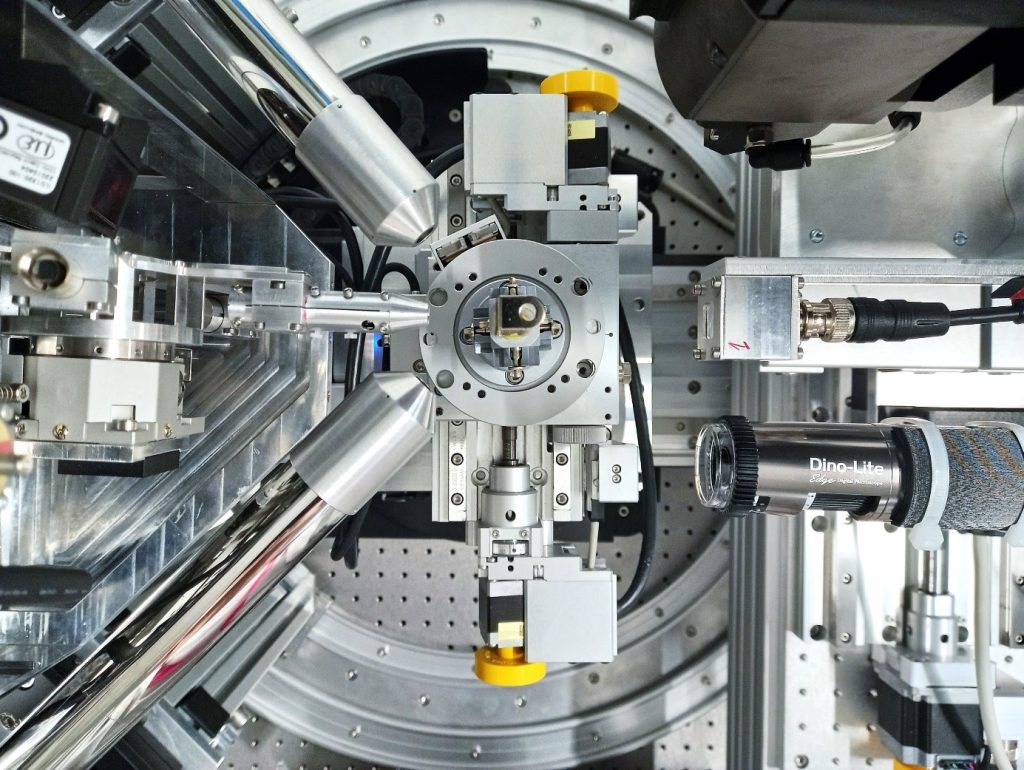X-ray Microimaging and Microspectroscopy (PolyX)
NATIONAL SYNCHROTRON RADIATION CENTRE SOLARIS IN KRAKOW

PolyX is a compact beamline for multimodal X-ray microimaging and X-ray microspectroscopy in the energy range 5-15 keV. Available techniques are X-ray absorption spectroscopy (µXAS), X-ray fluorescence microscopy (µXRF), and X-ray microtomography (µCT) with absorption or phase contrast.
The name of the beamline originates from polycapillary optical elements and polychromatic X-ray radiation which are employed to increase the X-ray flux from bending magnet. POLYX enables imaging of 2D and 3D structures, elemental distribution and chemical phases in investigated samples.
Technical specifications and sample environment
PolyX works in three operation modes:
• white mode, 1012 ph/s/mm2
• “high intensity” mode with double multilayer monochromator, 1011ph/s/mm2 @ 8keV, BW 1-2%,
• “high resolution” mode: double crystal Si(111) monochromator, 109ph/s/mm2 @ 8keV, BW 2×10-4
Beam size at sample (H x V):
• unfocused beam: maximum beam size 20mm × 4mm
• focused beam: polycapillary optics 20µm – 200µm, monocapillary <5µm
Detectors:
| Radiography and µCT | Optique Peter X-ray microscope with PCO Edge 5.5 SCMOS camera with various exchangeable scintillators and objectives,
1M Hybrid pixel detector (Eiger 2S 1M) |
| X-ray absorption and X-ray fluorescence | Two 80mm2 Vortex SDD detectors (25µm Be and ML3.3 Extreme windows) combined with a digital pulse processor DANTE (XGLAB) that enables mapping and recording of whole XRF spectra without deadtime in continuous snake-like scans |
| Beam monitors & transmission | Ionization chambers, PIN diodes |
| Sample inspection | On-line and off-line optical microscopes for sample inspection and scan range definitions |
The experimental geometry at POLYX can be easily reconfigured and the beamline has a dedicated area for user setups, which enables non-standard experiments and test. Potential POLYX users are encouraged to propose and consults non-standard experiments with POLYX staff.
Measurements are performed in air or helium atmosphere.
Detailed information about the PolyX beamline and the features of its end station can be found on the beamline’s home page.
Contact:
Katarzyna Sowa
Tel: +48 12 664 4132 (office) |+48 517 120 858 (mobile) | +48 12 664 4088 (beamline)
Paweł Korecki
Tel: +48 12 664 4627 (office)
-
20.02.2025
X-ray computed tomography (CT) TomoLab
-
23.01.2025
THz beamline TeraFERMI



